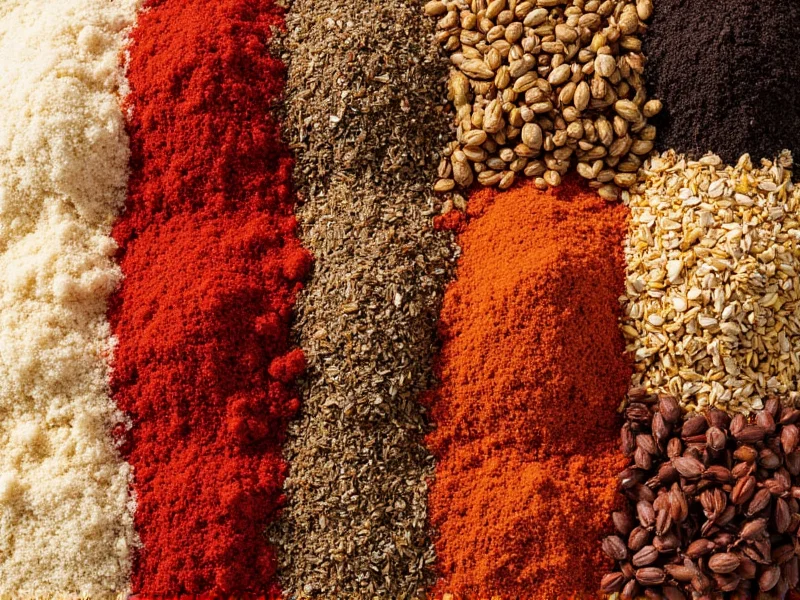Understanding Authentic Italian Seasoning Traditions
When exploring what are Italian spices, it's crucial to recognize that traditional Italian cooking doesn't actually feature many dried spices in the way other global cuisines do. Italians prioritize fresh herbs and high-quality ingredients over complex spice mixes. The misconception of 'Italian spices' largely stems from American-Italian adaptations that created convenient dried blends for commercial use.
Core Herbs in Italian Cooking
While not technically 'spices' (which come from seeds, bark, or roots), these herbs form the backbone of Italian flavor profiles:
| Herb | Primary Regions | Signature Dishes |
|---|---|---|
| Basil (Basilico) | Northern & Central Italy | Pesto, tomato sauces, Caprese salad |
| Oregano (Origano) | Southern Italy | Pizza, tomato-based sauces, grilled meats |
| Rosemary (Rosmarino) | Mediterranean coastal regions | Lamb, roasted potatoes, focaccia bread |
| Sage (Salvia) | Northern Italy | Butter sauces, risotto, saltimbocca |
| Fennel (Finocchio) | Central & Southern Italy | Sausages, seafood, roasted vegetables |
Essential Italian Spices (The Actual Spices)
True spices in Italian cooking are limited but impactful. Understanding essential Italian spices for cooking reveals how Italians use minimal spice to enhance rather than dominate flavors:
Red Pepper Flakes (Peperoncino)
The most authentic dried spice in Italian pantries, peperoncino varies by region from mild to fiery. Southern Italy uses it generously in pasta dishes like arrabbiata, while Northern regions employ it more sparingly.
Nutmeg (Noce Moscata)
Surprisingly essential in Northern Italian cuisine, freshly grated nutmeg elevates béchamel sauces, meatloaf (polpettone), and even某些 tomato sauces. Italians never use pre-ground nutmeg for authentic dishes.
Saffron (Zafferano)
Primarily in Milanese cuisine, saffron gives color and distinctive flavor to risotto alla Milanese. Italy produces some of the world's highest quality saffron in Abruzzo and Sardinia.
Regional Variations in Italian Seasoning
One of the most important aspects of understanding traditional Italian herbs and spices is recognizing regional differences:
- Northern Italy: Features butter-based cooking with sage, rosemary, and nutmeg. Truffles appear seasonally in Piedmont and Tuscany.
- Central Italy: Olive oil dominates with abundant use of rosemary, sage, and wild fennel. Garlic features prominently but never fried until bitter.
- Southern Italy: Bold flavors with oregano, basil, and peperoncino. Citrus zest and capers add brightness to coastal dishes.
- Sicily: Unique North African influences with saffron, cinnamon, and cloves appearing in some traditional dishes like caponata.
Common Misconceptions About Italian Spices
Many home cooks misunderstand what spices do Italians use most. Key clarifications:
- "Italian Seasoning" blends are primarily American inventions containing equal parts oregano, basil, rosemary, and thyme - rarely found in Italian pantries.
- Garlic is used thoughtfully, not excessively. Italians never use dried garlic powder in authentic cooking.
- Parsley (prezzemolo) is primarily a garnish, not a primary flavoring agent.
- Black pepper is used freshly cracked at the table, not cooked into sauces.
How to Use Italian Herbs Properly
Mastering how to use Italian herbs properly separates authentic cooking from imitations:
- Timing matters: Delicate herbs like basil go in at the end of cooking, while hardy rosemary and sage benefit from longer cooking times.
- Fresh vs. dried: Italians overwhelmingly prefer fresh herbs. Dried oregano works well in tomato sauces, but dried basil loses its character.
- Less is more: Authentic Italian cooking uses herbs to complement, not dominate, the primary ingredients.
- Quality over quantity: One sprig of fresh rosemary beats tablespoons of dried any day.
Building an Authentic Italian Spice Collection
For those exploring authentic Italian seasoning ingredients, start with these essentials:
- High-quality extra virgin olive oil (the foundation of Italian flavor)
- Fresh basil (keep in water like flowers)
- Dried oregano (for tomato sauces)
- Red pepper flakes (preferably from Calabria)
- Fresh rosemary (grows well in pots)
- Whole nutmeg (for grating fresh)
- Fresh parsley (for garnish)
Remember that in genuine Italian cooking, the quality of your base ingredients—tomatoes, olive oil, cheese—matters far more than spice quantity. The common spices in Italian cuisine serve as supporting players, not the main event.
FAQ: Understanding Italian Spices
What are the 3 most essential Italian herbs?
Basil, oregano, and rosemary form the holy trinity of Italian herbs. Basil dominates in Northern and Central regions for sauces and salads, oregano is essential in Southern cooking particularly for tomato-based dishes and pizza, while rosemary appears throughout Italy in roasted meats and breads.
Is garlic considered an Italian spice?
Garlic is a fundamental flavor base in Italian cooking but isn't classified as a spice. Italians use fresh garlic cloves sparingly—typically one or two per dish—and never dried garlic powder. The technique matters: garlic should be cooked gently in olive oil until fragrant but never browned, as burnt garlic creates bitterness.
What's the difference between Italian and Mediterranean spices?
Italian seasoning focuses primarily on fresh herbs like basil and oregano with minimal dried spices, while broader Mediterranean cuisine incorporates more diverse spices like cumin, coriander, and sumac from Middle Eastern influences. Authentic Italian cooking rarely uses curry spices, turmeric, or complex spice blends common in other Mediterranean regions.
Do Italians use pre-made Italian seasoning blends?
Authentic Italian home cooking almost never uses pre-made Italian seasoning blends. These commercial mixes (typically equal parts basil, oregano, rosemary, and thyme) are primarily American inventions. Italians select individual fresh or dried herbs based on the specific dish and regional tradition rather than using standardized blends.
How should I store Italian herbs for maximum freshness?
For fresh herbs: treat like flowers—trim stems and place in water at room temperature, covering loosely with a plastic bag in the refrigerator. Dried herbs should be stored in airtight containers away from light and heat. Whole spices like nutmeg last longer than pre-ground versions. Properly stored dried oregano maintains flavor for 6-12 months, while fresh basil rarely lasts beyond 3-4 days even with optimal storage.











 浙公网安备
33010002000092号
浙公网安备
33010002000092号 浙B2-20120091-4
浙B2-20120091-4